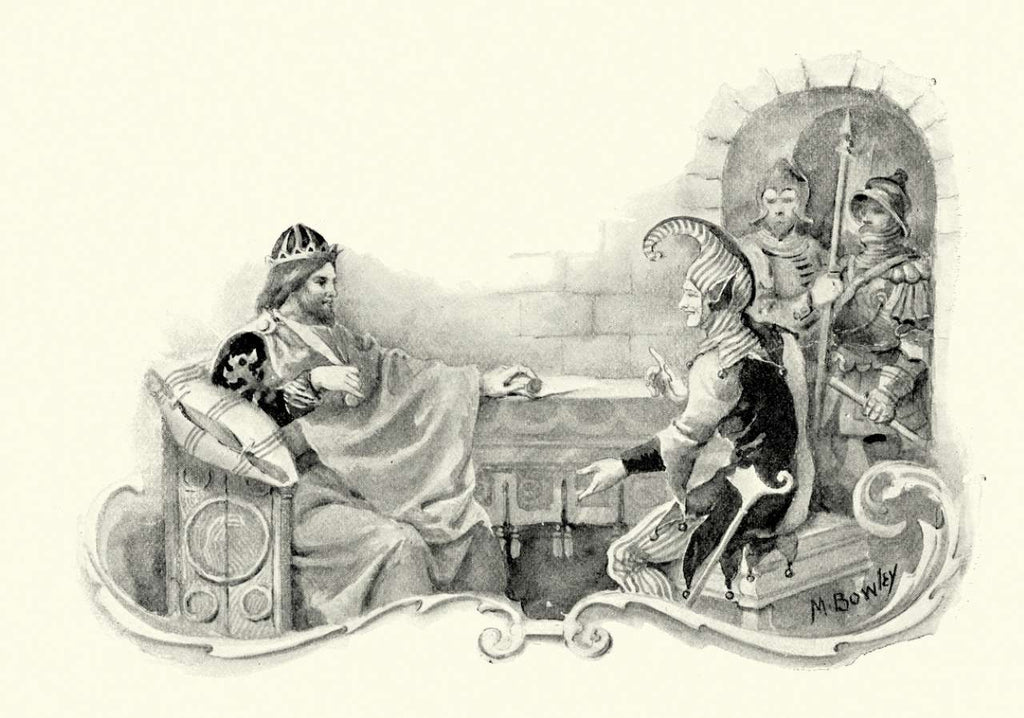Your Cart is Empty

The Renaissance era, a period of rebirth and enlightenment across Europe, was marked by significant advancements in art, science, and culture. Amidst the flourish of innovation and creativity, a figure stood out in the courts and public gatherings, bringing laughter and satire into the lives of many: the jester. If you've ever been fascinated by the colorful and complex history of the Renaissance, understanding the role of jesters will offer you a unique glimpse into the social dynamics and cultural expressions of the time.
In this post, we’re going to dive into the evolution, attire, and significance of jesters during the Renaissance, shedding light on why these figures became iconic symbols of the era. Let’s get started!
Jesters have been an integral part of societies long before the Renaissance; originating from various precursors in ancient civilizations, they evolved into prominent figures in medieval courts. However, it was during the Renaissance that jesters truly flourished, becoming indispensable to the courts and the public alike. Their role expanded beyond mere entertainment, serving as confidants and critics who could voice truths under the guise of humor.
When you picture a jester, the iconic image that comes to mind is often one of bright, mismatched garments, a fool’s cap with bells, and a motley of colors. Renaissance jesters were indeed known for their distinctive attire, which was not only a symbol of their profession but also an embodiment of their ability to invert and challenge societal norms. Their outfits allowed them to stand apart, embodying the freedom and folly that their role permitted within the structured hierarchy of the Renaissance court.
In the courts of the Renaissance, jesters were much more than mere entertainers; they were integral to the cultural and political fabric of the time. With their unique position, jesters had the liberty to cross social boundaries and poke fun at nobility, politics, and even the monarch themselves - a bit like the first iteration of an online troll! This ability to deliver critique and satire without repercussion was not only a testament to their skill but also to the value placed on their role within the court, making them - in many ways - the voice that could speak the truths others dared not utter.

The jesters’ verbal artistry was as important as their physical performance; with a keen understanding of language and rhetoric, they mastered the art of wit and satire, engaging their audience with clever puns, rhymes, and storytelling. Their performances were not only for entertainment but also served as a medium for social commentary, reflecting the complexities and contradictions of Renaissance society.
As jesters became symbolic of the Renaissance era, their presence expanded beyond the courts into public celebrations and gatherings, most notably, Renaissance fairs. These fairs, which continue to be celebrated today, are a vibrant homage to the era, with jesters playing a central role. So if you're eager to find authentic Renaissance garb and experience the enchantment of Renaissance fairs, understanding the tradition of jesters will enrich your experience, offering a window into the historical significance of these events.
Let’s not forget the performance aspect; Jester performances were a blend of various skills, including music, storytelling, acrobatics, and even magic, and their ability to adapt and entertain diverse audiences was unparalleled. Either showcasing their versatility or creativity, the jesters’ performances were above all a testament to their artistry, reflecting the dynamic cultural landscape of the Renaissance.
Finally, we can’t talk about jesters without mentioning Renaissance jester festivals - these were a culmination of the jesters’ art, gathering audiences from across the social spectrum; these festivals weren’t only entertainment, but an important aspect of cultural exchange and community cohesion. Through laughter and satire, jesters could unite people, transcending social divides and celebrating the shared human experience. And what’s not to love about that?
Ultimately, the jesters of the Renaissance era were much more than entertainers in colorful attire; they were integral to the cultural and social dynamics of the time. Their role as critics, confidants, and comedians highlights the complexity of their profession, offering us insights into the values and contradictions of Renaissance society.
And as we reflect on the significance of jesters, it's clear that their legacy extends beyond the historical context, continuing to inspire and entertain. So whether you're attending a Renaissance fair or simply curious about the era, the spirit of the jester reminds us of the power of humor and satire in shaping our understanding of the world.
For those interested in delving deeper into the Renaissance era and its traditions, including the vibrant legacy of jesters, be sure to explore our collection for an opportunity to find authentic Renaissance clothing, while learning more about the fascinating traditions that continue to captivate us today.